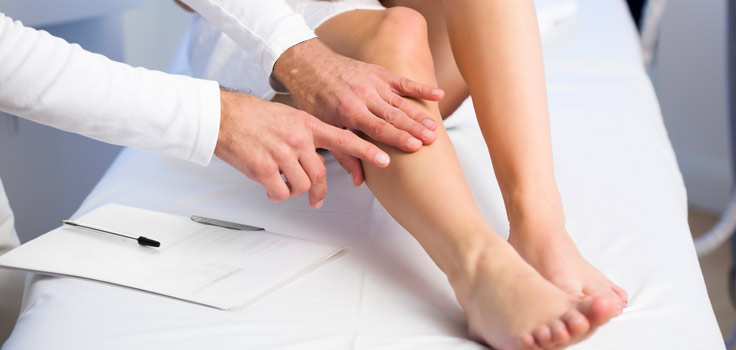One day you might find that you have purple or blue veins. These veins may even look twisted up like a tight chord. Even if you don’t feel any pain, these are common signs that you have varicose veins. At some point, it is likely that you will begin to experience signs of discomfort: an achy and heavy sensation through your legs; a burning feeling in the legs; and swelling, cramping and even itching and bleeding from the affected veins. In the case that varicose veins produce skin ulcers around your ankles, this is a sign of severe vascular disease, and this generally means you need to seek out medical attention sooner than later. So, what are the common causes of varicose veins?
Aging and the Loss of Vein Elasticity?
As we age, our veins tend to lose their elasticity. As a result, blood has a harder time making its way back to the heart. The valves that would normally prevent blood from flowing backward may begin to weaken as well. To make matters worse, blood tends to pool in the veins down in the legs. Since this is deoxygenated blood, this explains why the first symptoms of varicose veins people start to notice is discoloration in the veins in their legs.
However, recent studies have shown that it is not necessarily the aging process itself that leads to varicose veins. Rather, it is believed that lipids in the blood are often the real culprit causing these veins and other health conditions related to loss of apparent elasticity in vein and artery function. It is believed that a diet high in fruits and vegetables plays a role in slowing the onset of this signaling problem, and researchers are hopeful that the use of the powerful antioxidant lipoic acid will play a significant part in reversing the problem altogether.
Pregnancy
Another common cause of varicose veins is pregnancy. When a woman becomes pregnant, the volume of blood flowing through her veins increases. Unfortunately, this situation decreases the ability of the increased volume of blood to flow between the legs and the pelvis. As a result, the veins in a woman’s legs can begin to grow larger and may seem swollen. While this is necessary for the baby’s development, it is nonetheless still a cause of varicose veins in late pregnancy. In fact, as the baby develops, the uterus begins to exhibit more pressure on the legs, which can cause varicose veins to show for the first time or even worsen a preexisting condition of varicose veins.
Thankfully, varicose veins can be easily and effectively treated. At Smith Vein Institute, we offer minimally invasive services such as endovenous laser therapy and microphlebectomy to help you get rid of your varicose veins with minimal downtime. Contact us at either of our offices in Concord Township or Middlefield to schedule your consultation and learn more.



